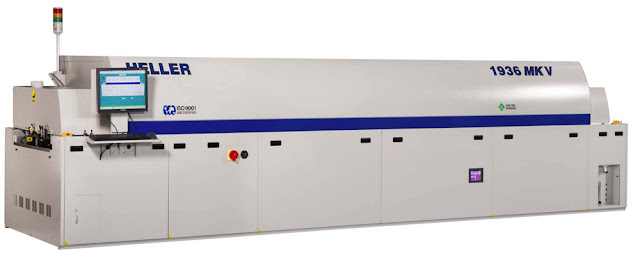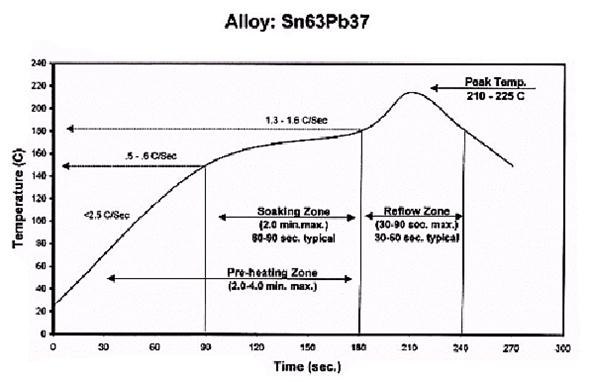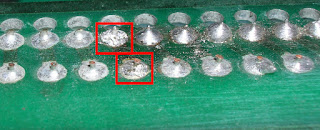0. Importance
of Solder Paste Management
1)
If the management of solder paste
that is a core element of SMT is insufficient, various soldering failure risks
increase such as solder short, cold solder.
1. Income
1)
Solder paste is warehoused to
producing field & material team
-
Warehousing Status: Store in Styrofoam packing box with Ice Pack
1)
Check if Styrofoam exterior is
abnormal or not
2)
Check if packing date on Invoice
exceeds over 2 weeks or not.
- if
it is exceeded, notify/return to material operator
3)
Check if Solder paste package is
damaged and be dented in visual
-
If it is found, notify/return to
material operator.
3. Attach
controlling tag
1)
Included contexts of charts(Date is
written as M/D, h:min.)
- Income date / inputted date
to refrigerator / Outgoing date to refrigerator / Mixing
time /
Opened date
2)
Controlling Tag should
be managed with it attached on solder paste’s container
3)
Solder paste should be controlled
from income time to discarded time
4. Cold
storage
1)
Temperature for storing: 1~10℃ (Recommended : 2~8℃)
2)
Controlling as “first in, first
out.”
※
If cold storage
is not met, the physical properties of the solder paste are
changed due to the volatility of the flux.
→
Increase soldering failure risk
5.
Storage in room
temperature
1)
Solder paste should be neglected in unopened and room temperature(25±3 ℃)
after taking out quantity of the day
shift production
-
Storage in room temperature : 2hr ~ 12hr (Recommended : 2~3hr)
※ reason to storage in
room temperature: In case of low temperature open, Solder
ball defect occurs by moisture
absorption caused by dew condensation
2)
In case of no production, store in
cold after unopened and room temperature
storage
-
Re-storage should be used after storing over 12 hours.
6. Mix
1)
Solder paste storage
in room temperature is agitated in
pocket of mix machine
-
Recommended :
45sec /
1,000 rpm
※
Details : Refer Solder paste spec sheet on each Maker / Composition (attachment)
※ if
you do not meet the mix standards,
Increase soldering failure risk because solder
and flux do not
mix evenly\
7. Open
/ Review
1)
If discoloration/mass after
agitated Solder paste open, notify/return to material operator.
8. input
to printer
1)
Spread neglected Solder paste evenly on Stencil with printing machine using
designated
scoop. (Suggested : thickness 15 ~
20 mm)
2)
Remainders after inputing printing
machine should be stored with cap cover
and
use it within 12hours
- Controlling Solder Paste When SMT
Line is not Operated
1)
If it is not exceeded 4hours, print
after roll Solder paste twice
2) If it is exceeded over 4 hours, discard after raking out with
※
After 4 hours are over, Solder characteristics are lower.(viscosity, adhesion,
oxidation, etc.,)
2.
Collecting & storing disposal solder
1)
Collect Used Solder Paste with
designated scoop on original Solder container and
record disposal date on
management chart on Solder container
2) Attach red sticker on Solder container to manage used Solder and
normal one
separately
3.
Writing check sheet of disposal solder
paste
1)
Production division writes discarded reason and date on check sheet, when
discarded
solder
paste stores
4. Disposal
solder paste
1)
Environment Safety Team sells
stored used Solder to industrial waste specialized
company or Solder Paste manufacturer at
mutually agreed price and collect money
after checking weight in the presence
of both material operator and Environment
Safety
operator once a month.
Material management team arranges computerized inventory
※ Manage after deciding operating
department following to national disposal management
standard and subsidiaries using used Solder recycle should use with separated
regulation



